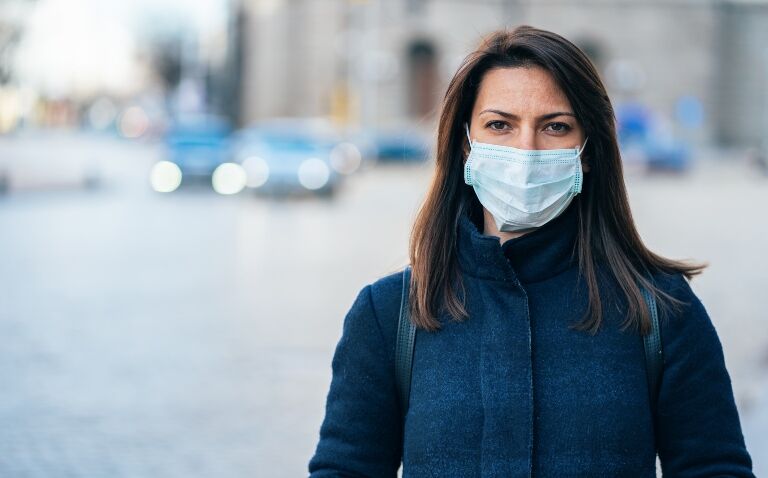Women who live and work in areas with higher levels of fine particulate air pollution are at greater risk of developing breast cancer than women who live and work in less polluted places, finds research presented at the European Society of Medical Oncology (ESMO) Congress 2023.
In a matched case-control study, researchers compared home and workplace air pollution exposure in 2,419 French women diagnosed with breast cancer against the exposure of 2,984 women without the disease from 1990 to 2011.
They found a statistically significant linear increase in breast cancer risk related to mean fine particulate matter (PM2.5) exposure, with a 28% increase in risk with an increment of 10 µg/m3 of PM2.5.
Lead author Professor Béatrice Fervers, head of prevention, cancer environment department, Léon Bérard Comprehensive Cancer Centre, France, said: ‘This contrasts with previous research which looked only at fine particle exposure where women were living, and showed small or no effects on breast cancer risk.’
In a study abstract published in the Annals of Oncology, the research term explained cases were matched to randomly selected controls based on several variables including place of residence, age and menopausal status.
All participants were drawn from the prospective E3N cohort – the French element of the European EPIC Study, coordinated by the International Agency for Research on Cancer.
Researchers using a Land Use Regression model to estimate annual mean PM2.5, coarse particulate matter (PM10) and nitrogen dioxide (NO2) and assigned them to women based on geocoded home and workplace addresses.
Mean exposure was calculated for each woman from the time they were included in the E3N cohort to their index date – the date of diagnosis of cases.
For PM10 and NO2 exposure, researchers found a numerical, but statistically non-significant, increased risk with an incremental increase of 10 µg/m3.
Hormone receptor or menopausal status did not affect any of the results, they added.
Commenting on the findings, Professor Charles Swanton, clinician scientist at the Francis Crick Institute in London, UK, said fine particulate matter can penetrate deep into the lungs, entering the blood stream and then being absorbed into breast and other tissues.
Professor Swanton, who presented research at ESMO Congress 2022 suggesting how PM2.5 particles may trigger lung cancer in non-smokers, said there was already evidence that air pollutants can change breast architecture.
‘It will be important to test if pollutants allow cells in breast tissue with pre-existing mutations to expand and drive tumour promotion possibly through inflammatory processes, similar to our observations in non-smokers with lung cancer,’ he said.
‘There is an urgent need to set up laboratory studies to investigate the effects of these small air pollutant particles on the latency, grade, aggression and progression of breast tumours.’
The French research comes weeks after US National Institute of Health researchers published data in the Journal of the National Cancer Institute showing living in an area with high levels of fine particulate air pollution was significantly associated with an increased risk of breast cancer incidence.
Professor Jean-Yves Blay, ESMO director of public policy, said there was strong epidemiological and biological evidence for the link between PM2.5 particle exposure and cancer, with good clinical and economic reasons for reducing pollution to prevent cancers.
In September 2023, the European Parliament adopted in plenary session its report on the ongoing revision of the EU Ambient Air Quality Directives, reflecting ESMO’s recommendations to set the annual limit value for PM2.5 at 5 µg/m³.
This adoption opens interinstitutional negotiations between the co-legislators – European Parliament, European Commission and EU Council – to agree on the final text of the directive.










